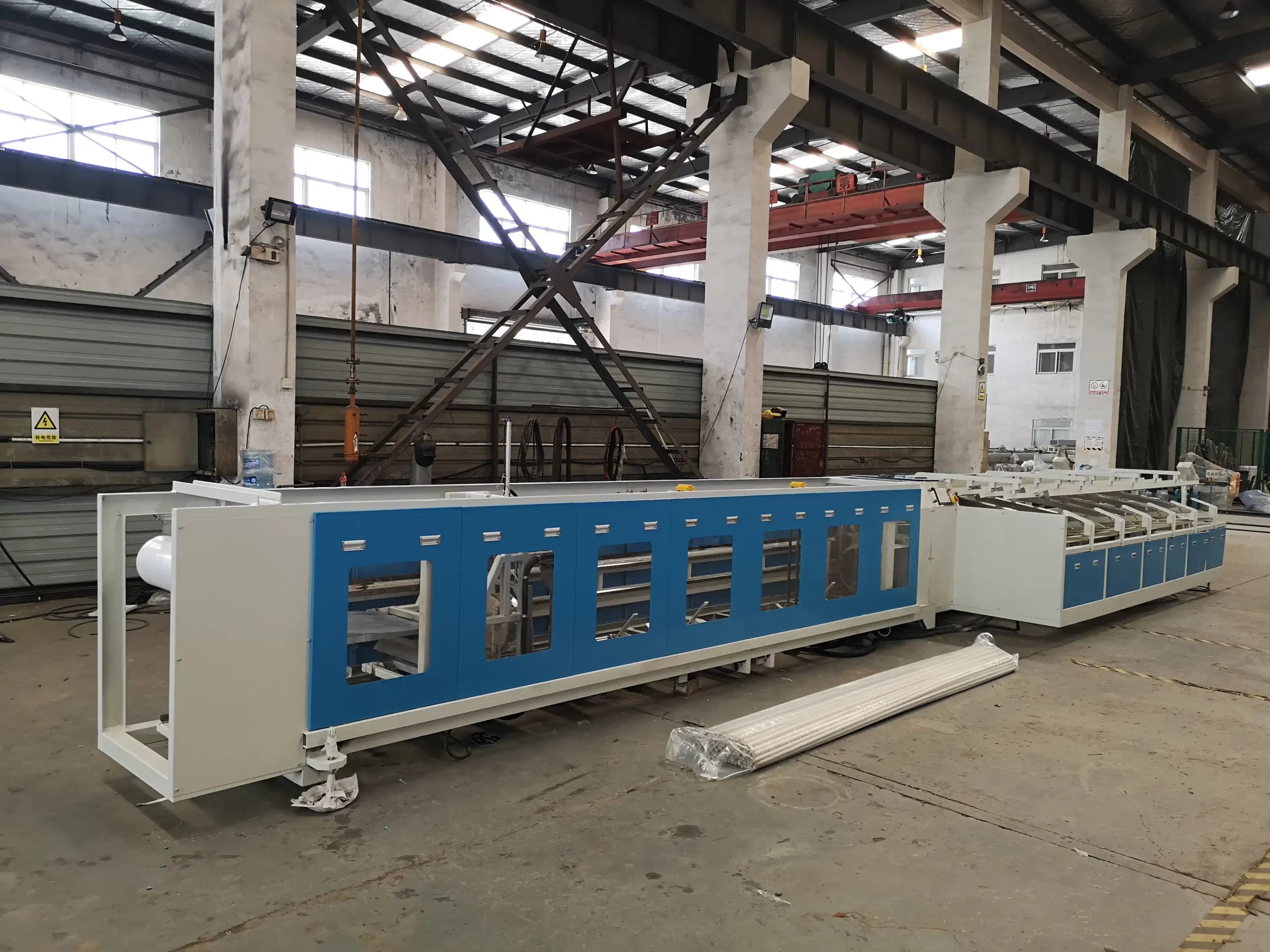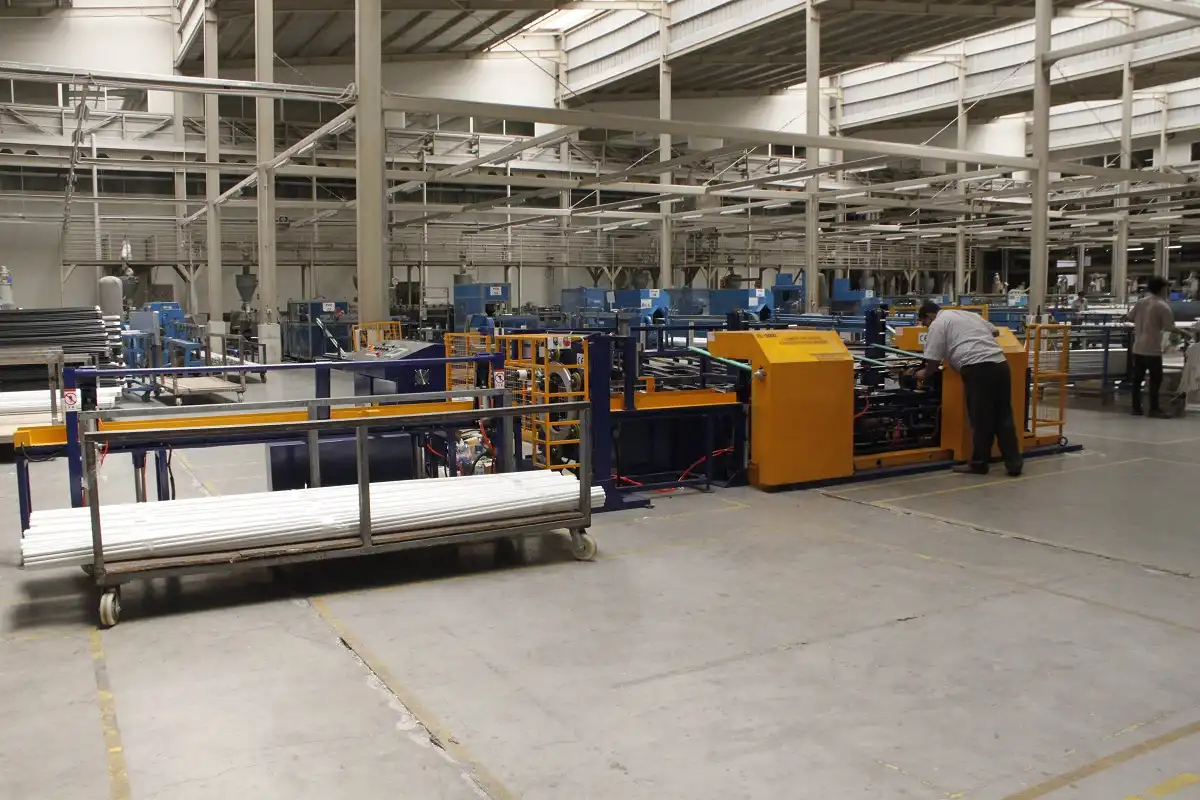How to Ensure Compliance with Environmental Sustainability Standards for Pipe Bundling Machines?
Meeting environmental sustainability standards is crucial for businesses using pipe bundling machines. It’s about minimizing environmental impact while maintaining operational efficiency and adhering to regulations. This introduction sets the stage for a deeper dive.

To ensure compliance, focus on using eco-friendly materials like paper or biodegradable banding, optimizing energy consumption by selecting energy-efficient machines, and minimizing waste through efficient bundling processes. Regularly maintain machines to reduce energy waste and extend their lifespan, further contributing to sustainability.
As businesses increasingly prioritize environmental responsibility, understanding how to ensure compliance with environmental sustainability standards for pipe bundling machines is paramount. Let’s explore actionable strategies and industry best practices to help you achieve this goal.
1. Selecting Eco-Friendly Materials for Pipe Bundling
Choosing the right materials is fundamental for minimizing the environmental footprint of pipe bundling. This sets the tone for a greener approach to your operations.
Using eco-friendly banding materials like paper, biodegradable plastics, or recycled content is essential. These materials reduce reliance on virgin plastics and decrease waste. Partner with suppliers who prioritize sustainable sourcing and offer certifications to validate their environmental claims.

Expanding on material selection, understanding the nuances of different eco-friendly options, their performance characteristics, and how they align with your specific bundling needs is critical.
Diving Deeper: Evaluating Eco-Friendly Banding Materials
The shift towards sustainable packaging demands a thorough evaluation of available materials. This involves considering factors beyond just the "eco-friendly" label, such as material strength, durability, cost, and recyclability. Let’s break down some common options:
- Paper Banding: Offers a classic, recyclable solution, ideal for showcasing products without damage.
- Biodegradable Plastics: Breaks down naturally, reducing long-term environmental impact.
- Recycled Content Plastics: Lowers the demand for new plastic production and utilizes existing waste.
However, each option has its trade-offs. Paper banding may not be suitable for heavy-duty applications or wet environments. Biodegradable plastics may require specific composting conditions to break down effectively. Recycled plastics may have slightly different performance characteristics compared to virgin plastics.
To make an informed decision, consider the following:
- Application Requirements: What are the weight and size of the pipes you’re bundling? What environmental conditions will the bundled pipes be exposed to?
- Cost Analysis: How do the costs of different materials compare, considering both upfront costs and potential long-term savings from reduced waste disposal fees or improved brand image?
- Supplier Certifications: Does the supplier have certifications like Forest Stewardship Council (FSC) for paper products or certifications for compostability of plastics?
Furthermore, implementing a scoring system can help you objectively compare different materials:
| Material | Strength | Durability | Recyclability | Cost | Overall Score |
|---|---|---|---|---|---|
| Paper Banding | 6 | 5 | 9 | 7 | 6.7 |
| Biodegradable Plastic | 7 | 7 | 7 | 6 | 6.8 |
| Recycled Content Plastic | 8 | 8 | 8 | 8 | 8.0 |
Note: Scores are out of 10, with 10 being the best.
Ultimately, the best choice depends on your specific needs and priorities. By carefully evaluating these factors and considering the trade-offs, you can select the most sustainable and effective material for your pipe bundling operations. Remember to consider the entire lifecycle of the material, from sourcing to disposal, to ensure a truly sustainable approach. Collection offers information about the best sustainable materials for your company.
2. Optimizing Energy Consumption in Pipe Bundling Machines
Energy efficiency is critical for reducing the carbon footprint of pipe bundling operations. By focusing on energy consumption, companies can save money and boost their brand reputation.
Select energy-efficient pipe bundling machines with features like automatic shut-off, variable speed controls, and optimized motor designs. Regularly maintain the machines to ensure they operate at peak efficiency, reducing unnecessary energy waste. Conduct energy audits to identify areas for improvement.
Refining Energy Efficiency: Advanced Techniques and Technologies
To take energy optimization to the next level, consider incorporating advanced technologies and strategies:
- Servo Motors: Replace traditional motors with servo motors for more precise control and reduced energy consumption.
- Smart Sensors: Integrate sensors to monitor energy usage and identify anomalies or inefficiencies in real-time.
- Predictive Maintenance: Use data analytics to predict when maintenance is needed, preventing breakdowns and ensuring optimal performance.
- Power Management Systems: Implement a system to automatically adjust power consumption based on production demands.
3. Minimizing Waste in the Pipe Bundling Process
Waste reduction is a cornerstone of environmental sustainability. Minimizing waste will reduce costs and also helps to protect the environment.
Minimize waste by optimizing bundling patterns and reducing excess material usage. Implement recycling programs for banding materials and explore reusable banding options where feasible. Train operators on efficient bundling techniques to minimize errors and waste.
Waste Reduction Strategies: A Detailed Look
Effective waste reduction requires a multi-faceted approach, combining process optimization, material management, and operator training. Let’s delve into specific strategies:
- Optimize Bundling Patterns: Analyze pipe dimensions and bundling requirements to determine the most efficient bundling patterns that minimize material usage.
- Reduce Banding Material Width: Use the narrowest banding material that still provides adequate strength and security, reducing overall material consumption.
- Implement Closed-Loop Recycling: Partner with recycling facilities to ensure that banding materials are properly recycled and reused, creating a closed-loop system.
A structured waste audit can identify key areas for improvement:
| Waste Stream | Source | Current Volume (per month) | Potential Reduction Strategies | Estimated Reduction |
|---|---|---|---|---|
| Banding Material | Excess material from bundling process | 500 lbs | Optimize bundling patterns, reduce banding width | 150 lbs |
| Damaged Banding | Machine malfunctions, operator errors | 200 lbs | Implement preventive maintenance program, provide operator training | 100 lbs |
| Packaging Waste | Incoming supplies | 100 lbs | Negotiate with suppliers to reduce packaging, use reusable containers | 50 lbs |
By implementing these strategies and tracking progress through regular waste audits, you can significantly reduce waste and improve the environmental performance of your pipe bundling operations.
4. Staying Updated on Environmental Regulations and Standards
Adhering to environmental regulations and standards is a continuous process, given the evolving nature of sustainability requirements. Staying informed is essential for maintaining compliance and driving continuous improvement in sustainable practices.
Track and adapt to changing environmental regulations and industry standards related to packaging and waste management. Engage with industry associations and regulatory bodies to stay informed about new requirements and best practices. Conduct regular compliance audits to ensure that your pipe bundling operations meet all applicable standards.
Staying ahead of environmental regulations is not just about compliance; it’s about future-proofing your business. By proactively adopting sustainable practices and embracing innovation, you can gain a competitive edge, enhance your brand reputation, and contribute to a more sustainable future for the pipe bundling industry. Understanding the impact of pipe bundling machines on the environment is crucial for long-term sustainability.
Conclusion
Ensuring compliance with environmental sustainability standards for pipe bundling machines requires a multifaceted approach. By focusing on eco-friendly materials, energy efficiency, waste reduction, and continuous compliance monitoring, businesses can minimize their environmental impact while optimizing their operations. Adopting these strategies is not just good for the planet; it’s also good for business, enhancing brand reputation and driving long-term sustainability.
